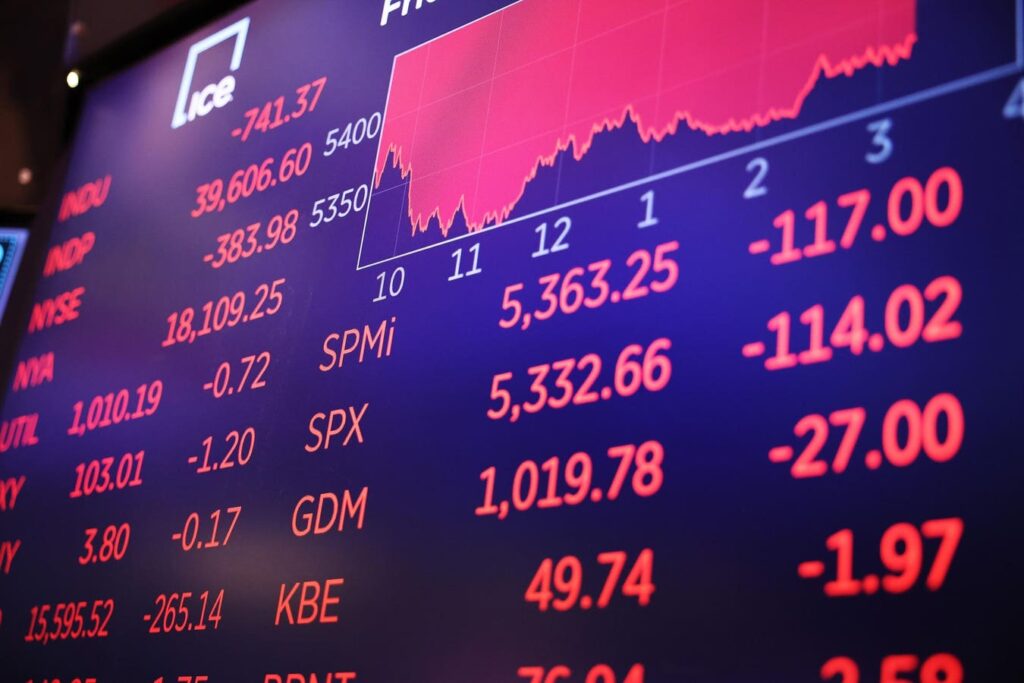(Photo by Michael M. Santiago/Getty Images)
How does the public’s perception of today’s economic turbulence compare to the past? Reviewing polls from 1979-1980, 1987, 2008-2009 and comparing them to today’s polls provides some early answers. Not only is public interest high, as it was in previous periods of uncertainty, but so too is the public’s sense of leadership weakness and pessimism about their prospects and the country’s. None of this is good news for the Trump administration.
In the new HarvardCAPS/Harris poll, 71% of registered voters said that they had seen news related to the stock market in past week. In an October 19, 1987 ABC News/Washington Post poll taken after the DJIA plunged 22.6 points, 89% said they had heard or read about the recent stock market drop. A Pew Research Center question asked at the time of the 2008 crash found that 70% said they were following news about the economy very closely. This response was one of all-time top responses in Pew’s long-running (and sadly discontinued) regular News Interest Index. Although the questions asked in these different periods are not identical, it’s clear (and unsurprising) that people pay close attention to economic chaos.
A second comparison to earlier periods comes by reviewing the country’s mood. The preliminary April 2025 reading from the long-running University of Michigan’s Survey of Consumers is a good place to start. The index fell for the fourth straight month across all demographic groups and among partisans. The share of consumers expecting unemployment to rise increased for the fifth month, and is now higher than in 2009. Inflation expectations in the survey rose to the highest reading since 1981. (The poll was taken before the latest report showing inflation declining for the first time in three years.)
Stagflation defined the economic climate in the late 1970s. When Jimmy Carter came into office the Michigan index stood at 87. By May 1980, it was 51. In 1987, sentiment dropped between October and November, but ticked up again in December. In an LA Times poll taken in late October 1987, people said they were more concerned about paying higher taxes (28%) and increasing inflation (23%) than they were about another stock market drop (7%).
In 2008-2009, people feared the country’s economy could collapse. A decade later, one could still see in polls the scars from the cascading crash. Sadly there is no single continuous trend in the polls that allow us to look from the late 1970s to today at people’s views of their own and their children’s prospects. But Gallup’s life evaluation index was at 48.9 in February, slightly above its lowest point during the 2008-2009 financial crisis.
Turning to each president’s approval rating, Gallup’s latest has Trump at 44%, a decline from 47% in late January, but his overall rating is still slightly higher than his average first-term rating (41%). In the late November Gallup poll before he left office, Jimmy Carter’s rating (34%) was almost half what it was when he was elected (66%). Americans had their doubts about Reagan’s economic stewardship. He began his presidency at 51% and dropped to 35% during the 1983 recession. It soon began to improve. In 1987, people blamed the stock market fall on broader economic problems and stock market speculators, not President Reagan. But he was dealing other problems at that point including the Iran-Contra scandal that pulled his approval ratings down to 43% before the crash.
President George W. Bush was an unpopular lame duck with a 25% approval rating in October 2008. The presidential campaign was in full swing when Lehman Brothers collapsed in September and other financial institutions teetered on the brink. Candidate John McCain fumbled when he suspended his campaign to return to Washington to deal with the crisis. Barack Obama responded that the candidates could do more than one thing at a time, and Obama was elected to deal with the economic carnage.
The historical comparisons do not bode well for the current administration. Trump has lost ground on the key metric of handling the economy and on inflation and tariffs in recent weeks. In the CNBC poll released Monday, his rating on handling the economy was 43%, the lowest of his presidential career. It is premature to judge his presidency’s economic success or failure, but people don’t like economic turmoil or uncertainty. The administration should be worried about the precedents. It’s Trump’s economy now.
Read the full article here
